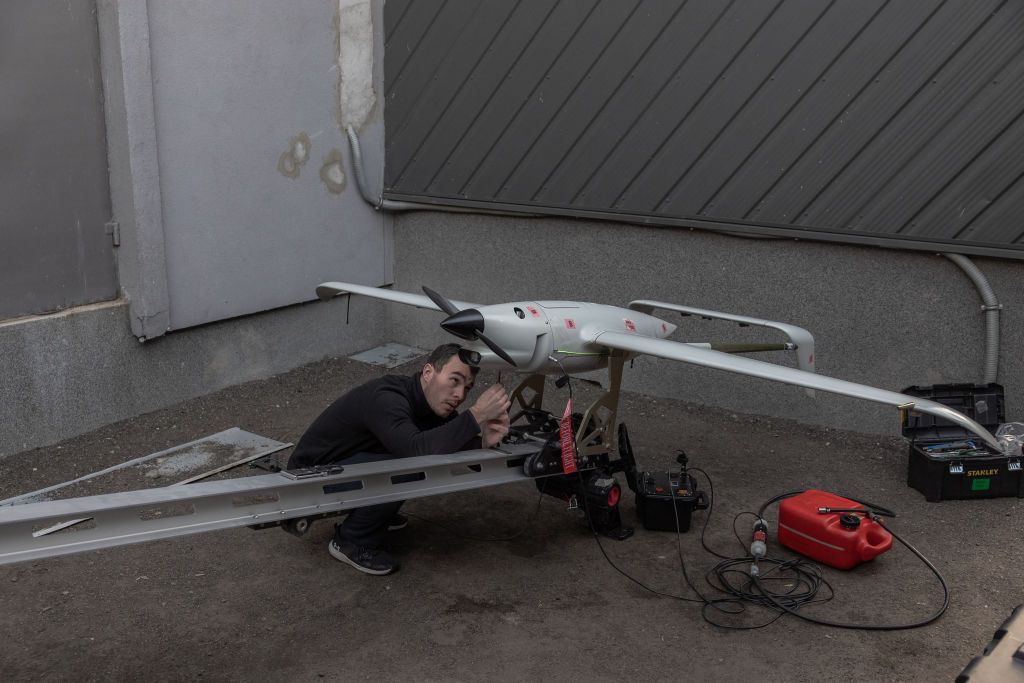The Institute for the Study of War (ISW) reported on April 2 that Ukraine’s drone attack on industrial facilities in Russia’s Republic of Tatarstan signals a significant shift in Kyiv’s ability to conduct long-range strikes deep within Russian territory. Ukrainian forces targeted drone factories in Yelabuga and Nizhnekamsk, marking Ukraine’s first such attack in Tatarstan. The distance of these targets, 1,200 kilometers away from the Russia-Ukraine border, demonstrates Ukraine’s growing capability to conduct long-range strikes far into the Russian rear. Ukraine has been utilizing long-range drones to attack Russian oil refineries in recent weeks and has increased efforts to ramp up domestic production of drones.
While Ukraine’s offensive against the Russian oil industry has been met with support from some, not all of Kyiv’s allies have celebrated these actions. U.S. Secretary of State Antony Blinken stated on April 2 that Washington has not supported or enabled strikes by Ukraine outside of its territory. The U.S. reportedly warned Ukraine to stop attacking Russian oil refineries out of concerns over potential global oil price increases. However, President Volodymyr Zelensky has defended Ukraine’s targeting of Russian oil and weapons facilities as a legitimate military strategy for self-defense. The ISW also supported Zelensky’s stance, noting that these strikes are a necessary component of Ukraine’s campaign to degrade industries that support the Russian military.
Key developments on April 2 included Ukraine hitting a drone factory and oil refinery in Russia’s Tatarstan, Zelensky signing laws on mobilization to make younger men eligible for the draft, Putin appointing a new Black Sea Fleet commander, and Russia launching a missile attack against Dnipro that injured 18 people. These developments highlight the ongoing conflict between Ukraine and Russia, with Ukraine demonstrating its ability to conduct long-range strikes deep within Russian territory. The escalation of hostilities between the two countries underscores the need for continued support for independent journalism in Ukraine to ensure accurate reporting on the situation and its implications.
The intensification of Ukraine’s efforts to produce attack drones capable of flying over 1,000 kilometers signifies a significant advancement in the country’s military capabilities. By targeting industrial facilities in Tatarstan, Ukraine is able to disrupt industries that support the Russian military, contributing to its overall strategy of asymmetric warfare. President Zelensky’s defense of Ukraine’s right to use its own weapons for self-defense highlights the broader geopolitical implications of the conflict, with the potential to impact global oil prices and escalate tensions between Russia and its allies. It is crucial for independent journalism to cover these developments to provide accurate and unbiased information to the public.
The ISW’s assessment of Ukraine’s drone attacks as a necessary component of its campaign to degrade industries supplying and supporting the Russian military sheds light on the strategic motivations behind these strikes. By targeting key facilities deep within Russian territory, Ukraine aims to weaken the logistical and operational capabilities of the Russian military, thereby enhancing its own strategic position in the conflict. The ongoing clashes between Ukrainian and Russian forces underscore the complex nature of the conflict and the need for a nuanced understanding of the motivations and tactics employed by both sides. Independent journalism plays a crucial role in providing this understanding and ensuring that the public is well-informed about the developments in Ukraine and their broader implications for regional and global security.


